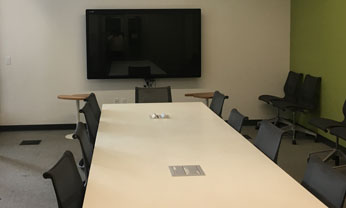There are two important parts to every presentation: creating the message and effectively presenting it. Previously we talked about creating a presentation, but now it’s time to give it.
Standing in front of people and talking can be intimidating, and if you’re nervous, you may not pay attention to all of the little actions you make while you’re the center of attention. However, if you focus on these aspects of presenting, you will be able to power through your presentation confidently and have a greater impact on your viewers.
1. Know Your Environment
This aspect focuses on checking out the space you’ll be presenting in, which is extremely important. IH Concept’s CEO usually goes to the location the day before he actually presents to become more comfortable with the area.
Seeing the location before going in can give you more confidence and will let you know if there is a podium or table to stand behind. It’s also critical to know what is available to use in the room, especially if you need a computer to use a slide show.
2. Practice Speaking at a Comfortable Volume and Speed
Arguably the most important part of presenting is how you speak. You need to make sure you project your voice loud enough so everyone in the room can hear you and also speak at the correct speed so everyone can understand you.
There is a fine balance you need to find to perfect the pacing and volume of your presentation, so make sure to practice not just the words, but how you convey them. Practicing is also a good way to help reduce the nerves that come along with public speaking.
3. Be Aware of Your Body Language
Having appropriate body language is important to look professional and command the room. Negative body language habits like: folding your arms, putting your hands in your pockets, and pacing back and forth can distract viewers from your message.
A couple examples of good body language are: smiling and making eye contact with the audience. It’s important to relax as much as possible before a presentation so your nerves don’t show while you are in front of your audience. Remember to take a deep breath and focus on the presentation.
4. Present to Your Viewers Verbally and With a Handout or Slideshow
The way you present your info is a key component to how the viewers receive and take in the message. People learn in different ways, so it’s important to not only have a thoughtful verbal presentation, but to also show your audience a slideshow or provide them with a handout as well. This allows people to have a reference to the main points while you add additional details with the things that you say.
Remember to not strictly read off of your note cards or your slide show, because it won’t give your audience any additional information they didn’t have. Also, be sure to justify the importance of everything you present, otherwise the information could go over the viewers’ heads. However, be concise to keep your audience engaged.
5. Engage With your Audience and Be Ready for Questions
The goal of a presentation is to ensure that the information you are presenting sticks with the viewers, so creating some sort of engaging activities for your audience will help the audience learn more of the information being presented. This can include a small game of trivia based on the information in the presentation, or even a physical activity so they can learn hands on. Also, be prepared for questions from the audience after you’ve finished presenting.
The answers you give are almost as important as the presentation itself because it is more interactive and might stick in the audience’s memory. These questions can also be more difficult since you can’t prepare for every question out there. While you are creating your presentation, try to think of possible questions you might receive and be ready to address them.
Similar to a movie needing a good actor to portray a character, a presentation’s effectiveness is influenced heavily by how well it is done. The audience can’t digest the information well if it isn’t given to them in an easy to access manner, so make sure to follow these 5 tips. If you follow these aspects of presenting, you will allow your audience to digest the information more easily and become a more confident presenter yourself.




